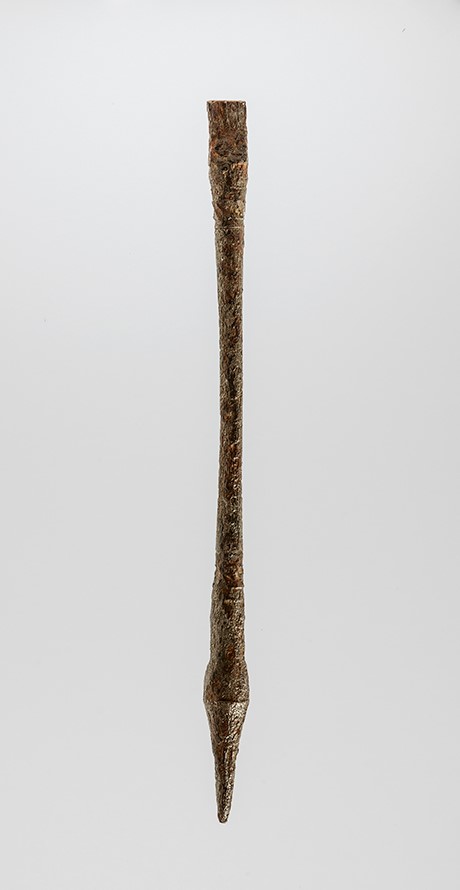Acquisition number: 1980.01
The stylus is of iron or bronze and iron, corroded but now stabilised. It is in the form of a rod that swells towards the gripping point where it is marked off from the shank by a zone of oblique strokes. There is another such band towards the rear where it again swells to provide a comfortable grip when using the chisel-like eraser.
Title: Stylus - 1980.01
Acquisition number: 1980.01
Author or editor: J.R. Green
Culture or period: Roman Imperial
Date: c. 2nd century AD.
Material: Metal - Iron
Object type: Writing materials
Dimensions: 116mm (l)
Origin region or location: United Kingdom
Origin city: London.
Display case or on loan: 6
Keywords: Roman, Imperial, Britain, Roman Britain
Charles Ede Ltd (London), Antiquities 115, no. 40 (ill.)
1980.01
Stylus
Purchased. Said to be from the City of London. Length 11.6cm.
The stylus is of iron or bronze and iron, corroded but now stabilised. It is in the form of a rod that swells towards the gripping point where it is marked off from the shank by a zone of oblique strokes. There is another such band towards the rear where it again swells to provide a comfortable grip when using the chisel-like eraser.
Perhaps second century AD. Compare the styli and other writing materials published in the British Museum’s Guide to the Antiquities of Roman Britain (3rd ed., London 1964) 48-49. More recently J. Pearce, “Archaeology, Writing Tablets and Literacy in Roman Britain”, Gallia 61, 2004, 43-51, as well as the article by M. Feugère and D. Bozic, “Les instruments de l’écriture” at pp. 21-41 in the same volume, and J. Alonso and R. Sabio Gonzalez, “Instrumentos de escriture en Augusta Emerita. Los stili o estiletes”, Revista de Estudios Extremeños 68, 2012, 1001-1024.
It is interesting that in the second-third century AD portrayal of the Muse of History, Klio, in one of wall-paintings at Ephesos, she holds a stylus and a folding wax tablet, not a pen and papyrus: V.M. Strocka, Die Wandmalereien der Hanghäuser in Ephesos (Forschungen in Ephesos viii.1, 1977) fig. 335.
Charles Ede Ltd (London), Antiquities 115, no. 40 (ill.)
